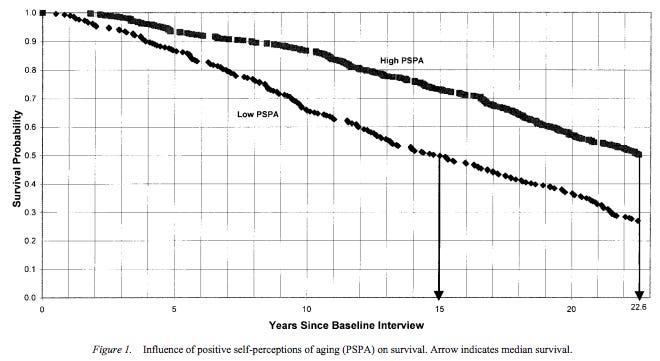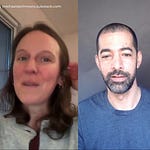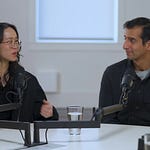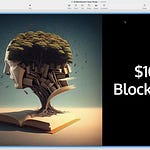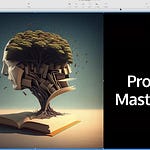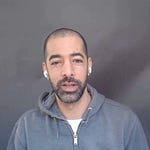Personal Note: I started deeply researching aging six years ago. Even though I was only 36 at the time, I suddenly felt the immediacy of my age the same way most people feel the immediacy of death only when confronted with a near-death experience, a terminal diagnosis, or the death of a loved one. This post shares the story behind the wake-up call, the summary of the research I found, and a breakdown of the video above.
Six years ago, age ambushed me.
It all began with a dream. The same dream, night after night.
I was back at NYU - a student once more. My heart beating in sync with a vibrant pulse of New York City, a city that felt like a living organism. There, amidst the sleepless rhythm of the metropolis, I was enfolded in the arms of young love with my first girl friend (now wife); living out loud with the naive, but inspiring possibility of young manhood.
And then, in a blink, I'd awaken from the dream, but with a twist.
For a split second upon waking, I wasn’t 36 anymore. Rather, I was 19 again—suddenly, shockingly shoved into a 36-year-old’s life. Picture it like the movie Big, but in reverse. Imagine a young, carefree Tom Hanks being catapulted into his older self's shoes. Can you imagine? Feeling like nearly two decades of your life just evaporated in an instant?
The sudden shock of loss was always brutal and surprising.
Then, reality washed over me again with all of the tenderness of ice water as I snapped back into my 36-year-old self.
My career was no longer a set of possible paths. Now, it was one well-trodden road. My wife and I, now together for nearly 20 years, were living a mature love. Crow’s feet were just beginning to sketch stories around my eyes.
I felt the sadness of expectations not lived up to and the appreciation of expectations surpassed that I couldn’t have even imagined at 19. I appreciated being 36, but that didn’t make me miss 19 any less amidst the immediate confusion of waking up.
As this became a recurring dream, its essence lingered like the scent of rain on dry earth. Aging no longer felt like something safely resting in the future—waiting for me. It felt alive and urgent—something I needed to figure out.
So that year, I spent an entire month full-time reading all of the most interesting academic literature on aging and searching out great role models of a life well-lived who were in their 70s and beyond.
I birthed three articles from the deep dive…
Article #1: I’m 36, And I Just Realized A Timeless Truth I Missed All This Time
I uncovered longitudinal research that was so surprising that it was hard to believe. A fascinating 23-year Yale study showed that our self-perceptions of aging dramatically impact our lifespan. In fact, individuals with high positive self-perceptions of aging (High PSPA) lived an amazing 7.5 years longer than those with low positive self-perceptions of aging (Low PSPA).
This study, which was later replicated, inspired me on multiple levels.
First, it wasn’t just the self-perceptions of people above 70 that mattered. The perceptions of people in their 40s determined how they aged in the following decades. This insight helped me see that aging wasn’t just a bodily process that happened overnight. It was also a mindset that one could develop in middle-age.
Second, as I collected more models of successful aging, I saw inspiring examples of people:
Notching their personal record for a marathon and becoming fitter than an active college student.
Learning advanced skills and building up their reservoir of knowledge so that their memory increased rather than decreased.
Running significant companies.
Making their most creative work.
Evolving into higher and higher levels of wisdom.
Building a more age-diverse network
Particularly fascinated by creativity, I wanted to explore what it meant to develop in creativity as one aged. So I wrote…
Article #2: Your Work Peak Is Later Than You Think, According To Research
In this article, I explore the lives of people who did their best work after 40 and the process they used to do so. I featured individuals and the age of their best works like the following ones:
Finally, I decided that I didn’t want to be blind-sided by age. I wanted to understand and confront its brutalities head-on and early…
Article #3: These 7 Brutal Truths About Aging Will Help You Get Your Shit Together
In this article, I researched and confronted 7 brutal truths about aging I hadn’t fully metabolized before:
50% of all first marriages end in divorce. Then it gets worse
Raising kids to 18 takes 13,000+ hours and over $200,000. Then college costs even more
Caring for elderly parents typically takes 1,000 hours & $12,000 per year
The cognitive processing speed of the average person declines starting in their 20s.
The best contribution of scientists comes around 40 years old (on average)
Our knowledge becomes outdated faster and faster, causing us to make bad decisions
Over 20% of American adults have chronic pain according to the CDC
Then, I researched and shared ways to confront these truths.
With that context set, you can understand why the video in this article resonated with me…
Video Breakdown—Nobel Laureate Kazuo Ishiguro Breaks Down The Three Paths To Creative Success As You Age
In this video, writer Kazuo Ishiguro offers a refreshing perspective on aging and creativity. His insights dismantle the typical narrative that equates aging with a decline in innovation and artistic relevance. Instead, he presents a compelling case for how aging can be a catalyst for creative evolution and depth.
The Nobel Laureate identifies three distinct models through which artists adapt and flourish with age:
The Consistency Model: Think Neil Young or John McEnroe. Here, the artist continues their established trajectory, leveraging the skills and styles they're renowned for. Even if peak performance dips slightly, the high baseline ensures enduring quality and relevance.
The Distillation Model: Exemplified by legends like Cormac McCarthy and Ernest Hemingway, this approach involves refining and simplifying complex ideas developed throughout an entire career into focused, potent expressions.
The Evolution Model: Leonard Cohen and Bob Dylan are poster children for this approach. Far from resting on their laurels, these artists have embraced the aging process as a new frontier for inspiration. Their later works are rich tapestries woven with threads of nostalgia, regret, joy, and wisdom. This model challenges the stereotype of aging as a barrier to innovation; instead, it positions it as a unique lens through which new creative territories can be explored.
Full 27-Minute Video Interview
Reflection Question You
Which of the three approaches do you see yourself taking as you age?
Why?
Paid members can answer in the comments, and I read and respond to every comment.


